Dublin’s a vibrant and buzzing city, rich with culture and art; historic and imposing architecture; stunning landscapes; castles; majestic cathedrals; haunted homes; museums, and a seemingly endless number of bars and pubs.

First-time visitors inevitably make a bee-line for the tourist-packed Temple Bar area, in addition to visiting Dublin Castle; splashing the cash on Grafton Street; taking a selfie with the statue of Molly Malone (who’s known locally as “The Tart With The Cart”); stopping by St. Patrick’s Cathedral; drinking an over-priced and mediocre Guinness in the Crown Bar, and even splashing out a whopping €16 per person to visit the sickeningly twee Leprechaun Museum…no, just…..no.
Once the cliché checklist is completed though it’s time to start enjoying The Fair City away from the culchie crowds—and our alternative Dublin guide will help you get your craic on like a local.
Sunset terrors
Ireland’s west coast is famous for its spectacular sunsets, but you don’t have to trudge all the way to Galway to enjoy a twilight treat.
One of the best places to watch the sun go down over Dublin, and take in phenomenal views of the city and beyond, is from The Hell Fire Club on top of Montpellier Hill.
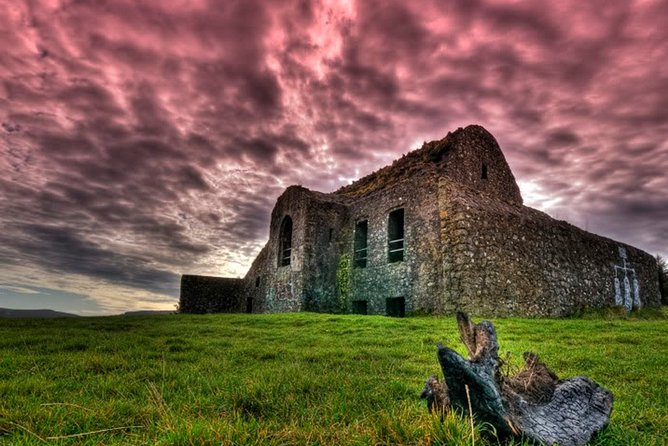
It’s around a 30-minute drive from the city center, but the €25 taxi ride is worth every cent If you like the great outdoors, nature, and stunning scenery. If all of that doesn’t float your boat though, then never fear, it still merits a visit, as The Hellfire Club also boasts a rep for being the scariest place in Ireland.
Now a crumbling old relic, The Hellfire Club was originally built in 1725 as a hunting lodge before being taken over by a reputed black magic aficionado called The King of Hell, who turned it into “a hotbed for all sorts of illegal activity such as drinking, gambling, and satanism”.
The area is said to be haunted by a number of ghosts and ghouls, including one that likes to grab people’s jewelry—especially if they’re wearing a crucifix; a horrifying “black cat” that’s the size of a Dalmatian and has ears like horns; a screaming woman who was set on fire; a murdered dwarf, and even the devil himself.
Legend has it that old Beelzebub once attended a card game at The Hellfire Club, but had to skedaddle after somebody spotted his cloven hooves. Apparently, he was so pissed (or was such a sore loser) that he burned the building to the ground.
Foodies’ paradise
Located just south of Dublin, a short stroll from Dún Laoghaire harbour and accessible by the DART is The People’s Park.
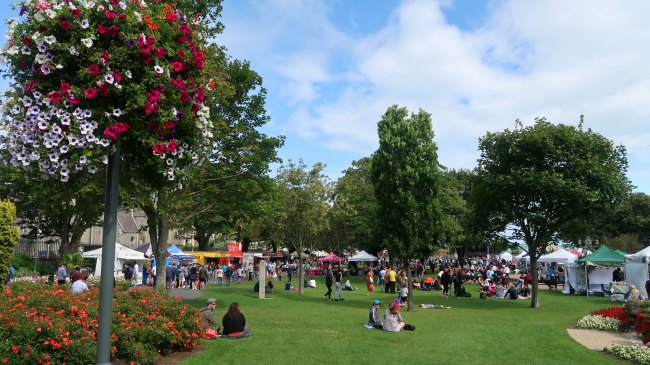
During the week, the 19th-century grounds are a tranquil and calm oasis with lush green gardens to stroll around, fountains, a cute little tearoom, a park lodge, and a Victorian bandstand.
But, on Sundays, The People’s Park is transformed into a bustling and cosmopolitan farmers’ market with fresh produce on offer from all around the world, street food vendors selling every kind of cuisine you can think of, and a myriad of stalls stocked with locally sourced goods, artisan crafts, books, paintings, and antiques.
Dive right in
If a dip in the freezing cold, turbulent Irish Sea sounds like your cup of tea then Forty Foot is the place for you!
The deepwater inlet is located on the southern tip of Dublin Bay, in suburban Dalkey, which is a 10-15 minute DART ride from the city center, and also boasts a bunch of cool little restaurants and spectacular views of the coast.

Men have been diving off Forty Foot’s promontory and swimming in the deepwater inlet for around 250 years now, but women had to wait till 1974 to partake as it was an exclusive “gentleman’s swimming club” up until then.
With temperatures at a shivering 4 degrees, Forty Foot isn’t for the faint of heart, but locals swear that the cold waters keep them young and boost their health—the swimming club’s oldest member is 95-years old, so they may actually be on to something.
Behind bars
There may not be a bottle of Jamesons in sight, but some of the best bars in Dublin are to be found inside of Kilmainham Gaol. The now-closed prison is where the leaders of the infamous 1916 Easter Rising were incarcerated before being shot dead by a British firing squad.
You get to see and experience what life was like for the men, women, and children, some as young as seven, who were incarcerated in Kilmainham up until 1924, including Irish republican revolutionaries and those perceived to be “enemies of the British empire”.
All visitors have to be accompanied by a guide who takes you on a fascinating, eye-opening, and at times, unsettling hour-long tour through the prison building, yard, and the old chapel, where Grace Gifford married her sweetheart, the legendary Irish nationalist, and uprising leader, Joseph Plunkett on the night of May 3, 1916.
The newlyweds were allowed to spend just ten minutes together, in the presence of guards, before Plunkett was led away and executed. The death of her husband motivated Gifford to become politically active, she was elected to the Sinn Féin executive in 1917 and ended up imprisoned in Kilmainham herself.
Gifford whiled away her months inside painting on the walls of her 250 square foot cell–her depiction of the Madonna and Child can still be seen to this day.
Walk on water
The Great South Wall, which leads to the red Poolbeg Lighthouse and coffee shop, extends 2.5 miles into Dublin Bay, and its 28-foot width makes for an easy and leisurely 30-40 minute walk.

It literally feels like you’re walking on water as you head into the sea, with the waves crashing up either side of the wall, which was built over 200 years ago and is one of the longest in Europe.
On a cold and windy day, it can prove to be a decidedly “bracing” walk, but highly enjoyable nonetheless, not least for the fresh sea air and breathtaking views of Dun Laoghaire, Killiney Head, and the Wicklow mountains.
Trad and stew
One thing you have to do while in Dublin is check out some traditional music, or “trad” as the locals call it.
There are tourist traps aplenty that promise the ultimate “traditional music experience” but do yourself a favor and give them all the swerve. Instead, make a night of it at The Hairy Lemon Pub in Stephen Street Lower.
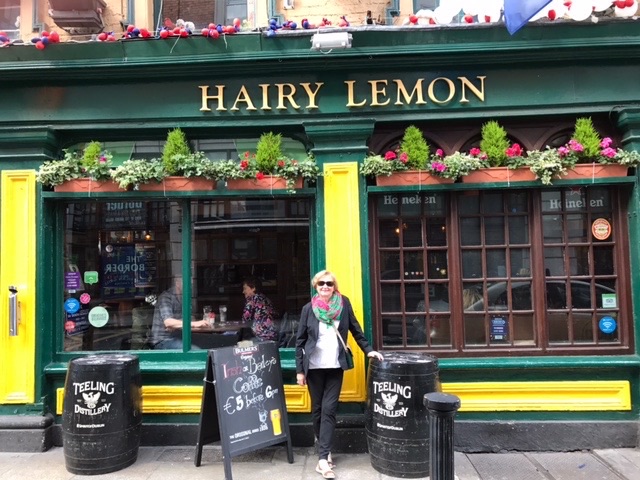
The self-styled “unconventional” pub is a green and yellow brightly colored 19th-century converted house with a sitting room suspended in mid-air, High Nellies, Wellies, and a Granny’s Kitchen. It featured heavily in the 1991 hit indie flick, The Commitments, and its walls are covered in memorabilia–but people don’t flock there for the decor, The Hairy Lemon is renowned for hosting the best Trad sessions in Dublin.
The venue is also famous for its scrumptious traditional pub food, like Beef and Stout Pie, Irish Stew, Dublin Coddle, and Donegal Squid, in addition to an astounding array of whiskies and “an absolutely amazing pint of Guinness” according to customer reviews.
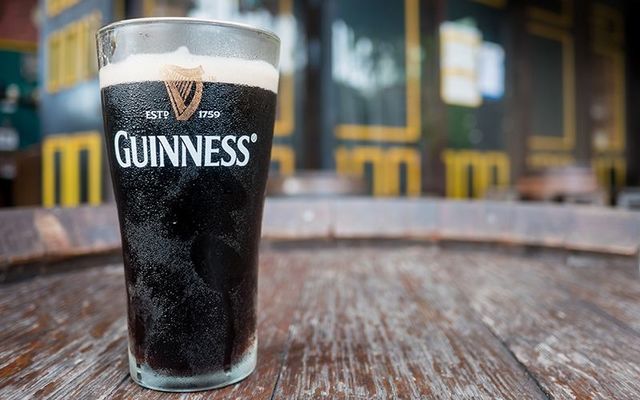
If it’s your first time at a Trad Session don’t be shocked when things get more than a little wild, especially as the night progresses, the drinks flow, and the tables become filled with locals busting out their best Riverdance moves.
Brace yourself for one feck of a hangover the next morning.
Back to school
Trinity College, which was built in 1592 and located bang smack in the center of Dubin, is Ireland’s oldest university with a famous alumnus that includes author Bram Stoker, poet Oscar Wilde, and Jonathan Swift, who wrote Gulliver’s Travels.
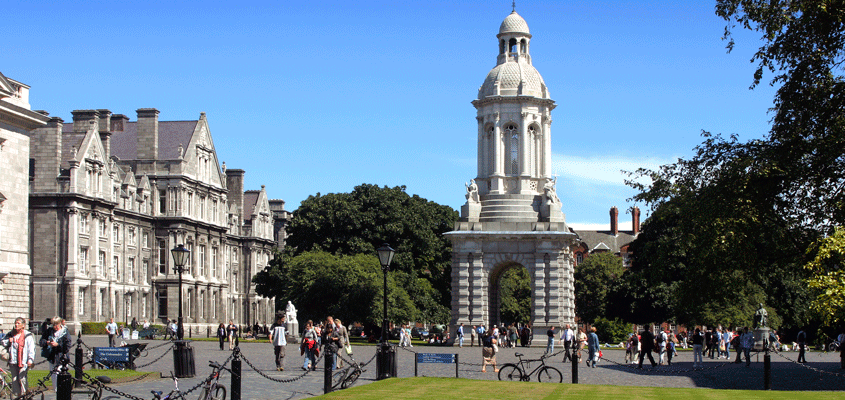
The university’s manicured grounds, historic quads, and cobbled pathways offer a tranquil and quiet respite from the hustle and bustle of the city, and there’s a wealth of must-sees, including the Trinity Bell, the ancient ninth-century gospel manuscript Book of Kells, and spectacular libraries.

JK Rowling’s Hogwarts was inspired by Trinity’s Old Library, with its seemingly never-ending rows of ancient books perched in beautiful oak bookcases. But, it’s The Long Room, located in the Old Library’s main area that’s truly awe-inspiring, with a staggering 200,000 books, including one of the few remaining copies of the 1916 Proclamation of the Irish Republic.
Never forget
Ireland’s history is a dark and tragic one, oftentimes thanks to the English who first invaded the country in 1169, before going on to fully conquer and colonize in 1536, then subjugating and terrorizing until southern Ireland finally gained full independence in 1937 (Northern Ireland still remains under British rule).
One of Ireland’s most harrowing and devastating historical events is the Great Potato Famine of 1845-49, which resulted in over a million people dying from starvation and illness, and a further million fleeing the country, causing a 25% decrease in the population.
British history has long-dictated that the famine was purely an ecological accident, caused by “bad seasons” and “late blight” disease which destroyed the leaves and edible roots of potato plants. But, over time it’s become apparent how much of the disaster was down to the greed and unethical practices of the English-born gentry who were granted great swaths of land, stolen from the Irish, by the British government.
The majority of those who fled from starvation sailed from Dublin’s Custom House Quay, which is now home to an authentic replica of a 1800s’ ship, a museum, and a collection of Famine Memorial statues, designed by the Irish sculptor Rowan Gillespie in 1997.
It’s a moving and memorable tribute to a horrific and catastrophic period in Irish history.
Garden gigs & chill
Iveagh Gardens is the perfect outdoor rendezvous, relaxation, and recreation hang-out for locals.
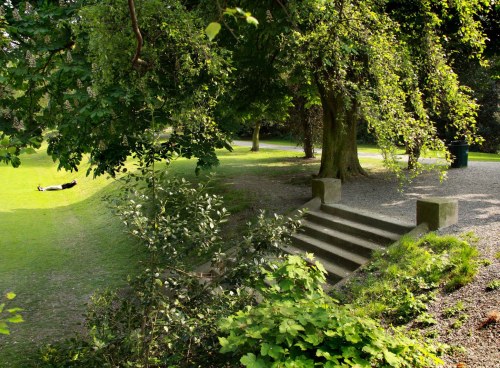
Despite being located in the heart of the city the once private park manages to evade the throngs of tourists and offers an awesome opportunity for some lazy daytime lounging around on the grass, shooting the breeze with friends, soaking up the stunning surroundings, and people watching.
During the summer months, Iveagh Gardens also turns into a secret outdoor music venue, hosting local musicians playing sunset and evening gigs. Check listings for details.

